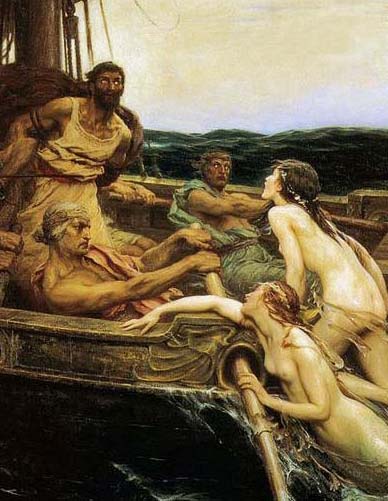Studies in Antiquity
Homer And:
Including the Odyssey
E Bruce Brooks and Keith L Yoder
First, there were the bards, singing their hero tales in return for supper and a night's lodging, up and down the isles and towns of Ionia.
Then came the poet we may agree to call Homer, who drew on those tales, and added new material of his own, to make a poem which he himself called the Menis: The Rage of Achilles. It had a single story line: an insult to Achilles, its resolution, and its conclusion in Achilles' slaying of Hector. It omitted many traditional tales (high school students who think they are going to read about the Trojan Horse are invariably disappointed), but it did give a version of the war, and posterity has called it the Iliad. To that poem were later added several scenes and episodes, to further embroider the basic story. The final version was regularly performed at Athens. It became Greece's textbook of itself, sold in bookstores and annotated by schoolmasters.
Somewhere along the line, there appeared a feminine counterpart to the Iliad. It picked up not on the Iliad heroes, but on resourceful Odysseus and his fantastic adventures as he finally returns to his faithful wife Penelope. It never achieved the national status of the Iliad (only war can unify a nation), but it was became part of the Homeric repertoire. The two poems influenced each other, becoming more compatible as time passed: for one thing, the Odyssey became more violent, to more closely counterpart the older poem..
This literary history needs to be dug out of hints embedded in the two present texts. The performance aspect, in particular, when adequately considered, creates a new basis for the understanding of the poems. There are also insights based on a new type of stylistic analysis, which shows more subtly how the speeches of the characters relate to each other.
Thus did these two poems eventually become the Iliad and Odyssey which we now have. Which is better: the bitter anger and grand conclusion of the one, or the touching sentiment and subtle satire of the other? Or maybe both? This book gives a closer opportunity for seeing what each adds to the other, and how they function together as the abiding heritage of one ancient people, and of the wider world.
Front Matter
Cover
Halftitle, with Advisors, 1-2
Title Page and Verso, 3-4
Dedication, 5-6
Preface, 7-8
Contents, 9-10
1. Prolegomena, 11-20
Before and After Homer, 21-22
Performance Length
2. *Demodocus, 23-28 (Odyssey 8)
3.
Agamemnon, 29-37 (Iliad 11)
4. *The Trojan War, 38-40 (Iliad 3-4)
Early Survivals
5.
*The Ships, 41-43 (Iliad 2)
6.
Helen, 44-45 (Iliad 20)
7.
Aeneas, 46-47
Inherited Personalities
8. *Diomedes, 48-50 (Iliad 5)
9. *Odysseus, 51-52
10.
Nestor, 53-54
Several Late Passages
11. Phoinix, 55 (Iliad 9)
12. Thersites, 56-57 (Iliad 2)
13. Dolon, 58-59 (Iliad 10)
The Major Peace Additions
14. The Shield of Achilles, 60-61 (Iliad 18)
15. The Burial of Hector, 62-64 (Iliad 23-24)
16. Adjustments, 66-68 (Iliad 11, 13, 16)
Last Lines
17. The Athenians, 69-72
Homer's Own Work, 73-74
Basic Structure
18. *The Quarrel, 75-79 (Iliad 1)
19.
*The Menis, 80-81
20.
*The Greek Wall, 82-83 (Iliad 7, 12, 16)
Leftover Characters
21.
Menelaos, 84-85 (Iliad 17)
22.
Hector, 86-87 (Iliad 15)
23.
Andromache, 88-89 (Iliad 6, 22, 24)
Sources of Inconsistency
24.
Aias, 90-91
25.
Nastes, 92-93 (Iliad 2, 21)
26. *Melanippos, 94-96
The Formulas
27.
Epithets, 97-98 (Odyssey 1)
28.
Rosy-Fingered Dawn, 99-106 (Iliad 1, 24, Odyssey)
29. Exploits, 107-108
Homer's Artistry
30. Closure, 109-110
The Odyssey, 111-112
A New Beginning
31.
The Moral Universe, 113 (Odyssey 1)
Layout
32. *Polis and Parlor, 114-115
33. *Telemachus, 116-119 (Odyssey 1-4.15, 22)
Phaiakia
34. *Calypso, 120-121 (Odyssey 5)
35. *Athena, 122-123 (Odyssey 1, 5, 14)
36. *Euryalos, 124-125 (Odyssey 5)
37.
Nausicaa, 126-127 (Odyssey 6-8)
Four Adventures
38. *The Cyclops, 128-130 (Odyssey 9)
39. *Circe, 131-132 (Odyssey 10)
40.
*Hades, 133-134 (Odyssey 11)
41.
*Thrinakia, 135-136 (Odyssey 12)
Plotting in Ithaka
42. *Eumaios, 137-138 (Odyssey 14)
43.
Argos, 139 (Odyssey 18)
44. *Eurycleia, 140-141 (Odyssey 19)
The Crisis Nears
45. *Theoclymenos, 142-143 (Odyssey 15, 17, 20)
46.
The Contest of the Bow, 144-145 (Odyssey 21)
Last Questions
47.
The Death of the Suitors, 146-147 (Odyssey 22)
48. *Recognition by Penelope, 148-152 (Odyssey 23)
49. *The Meadow of Asphodel, 153-154 (Odyssey 24)
50.
Father and Son, 155-156 (Odyssey 24)
A New Ending
51.
Amity, 157-158 (Odyssey 24)
Retrospect, 159-150
52. Epilegomena, 161-166
End Matter (167-168)
Summary, 169
Chronology, 170-171
Maps, 172-173
Interpolations in the Iliad, 174
Interpolations in the Odyssey, 175
Works Cited, 176-186
Passages Discussed, 187-189
Subject Index, 190-192
*Uses the BIRD stylistic difference test which was introduced in the Prolegomena
Contact The Editors / Exit to Excursions Page
